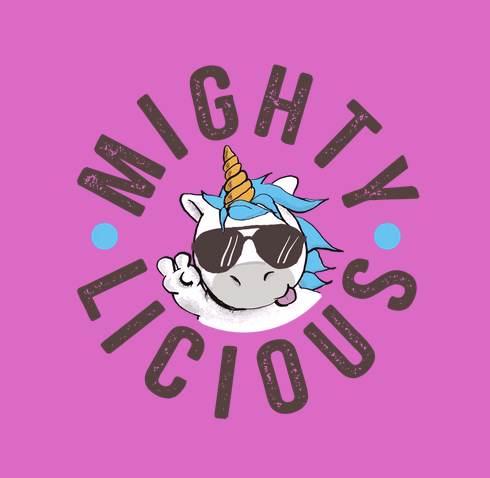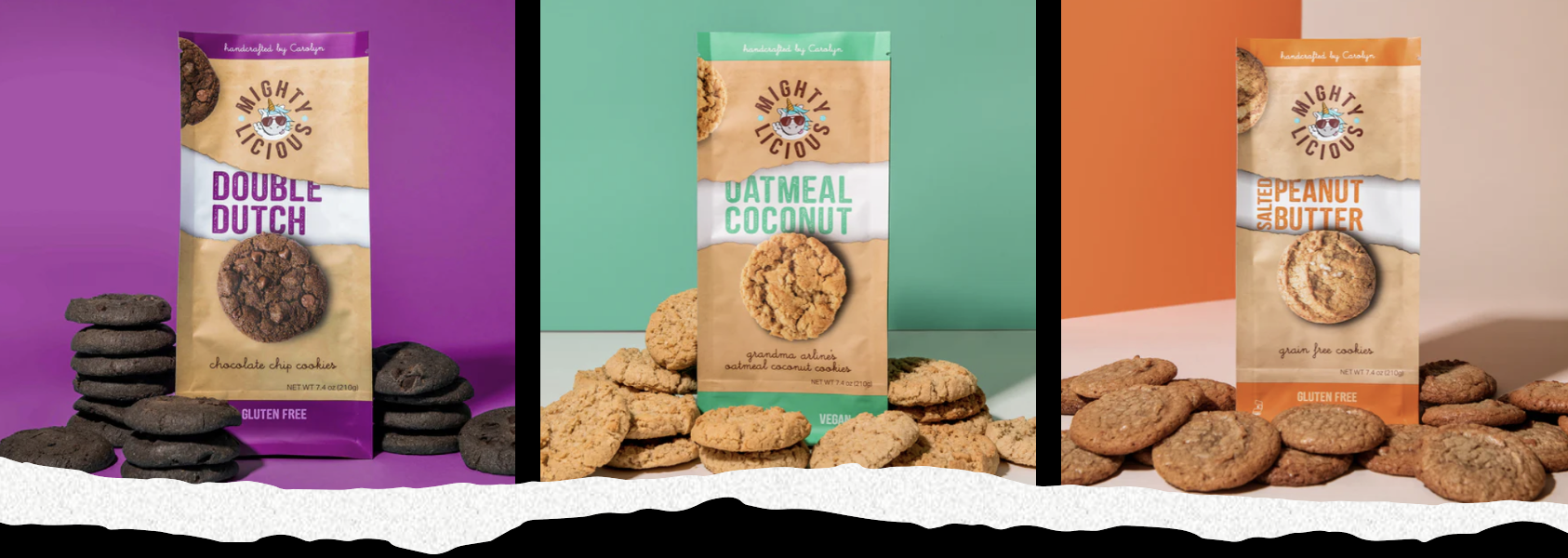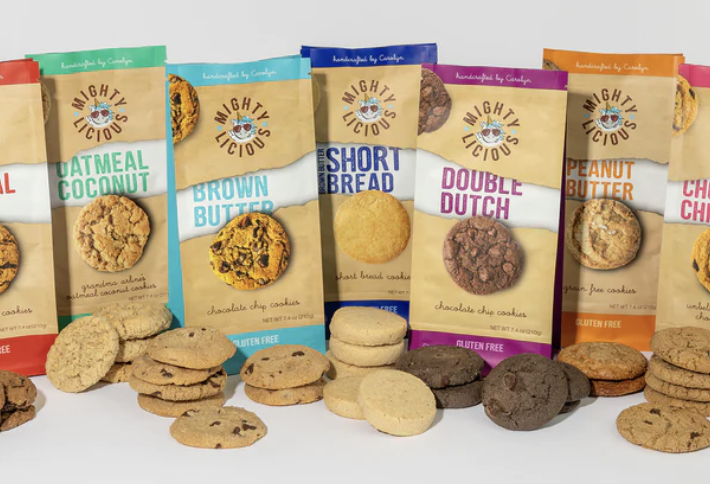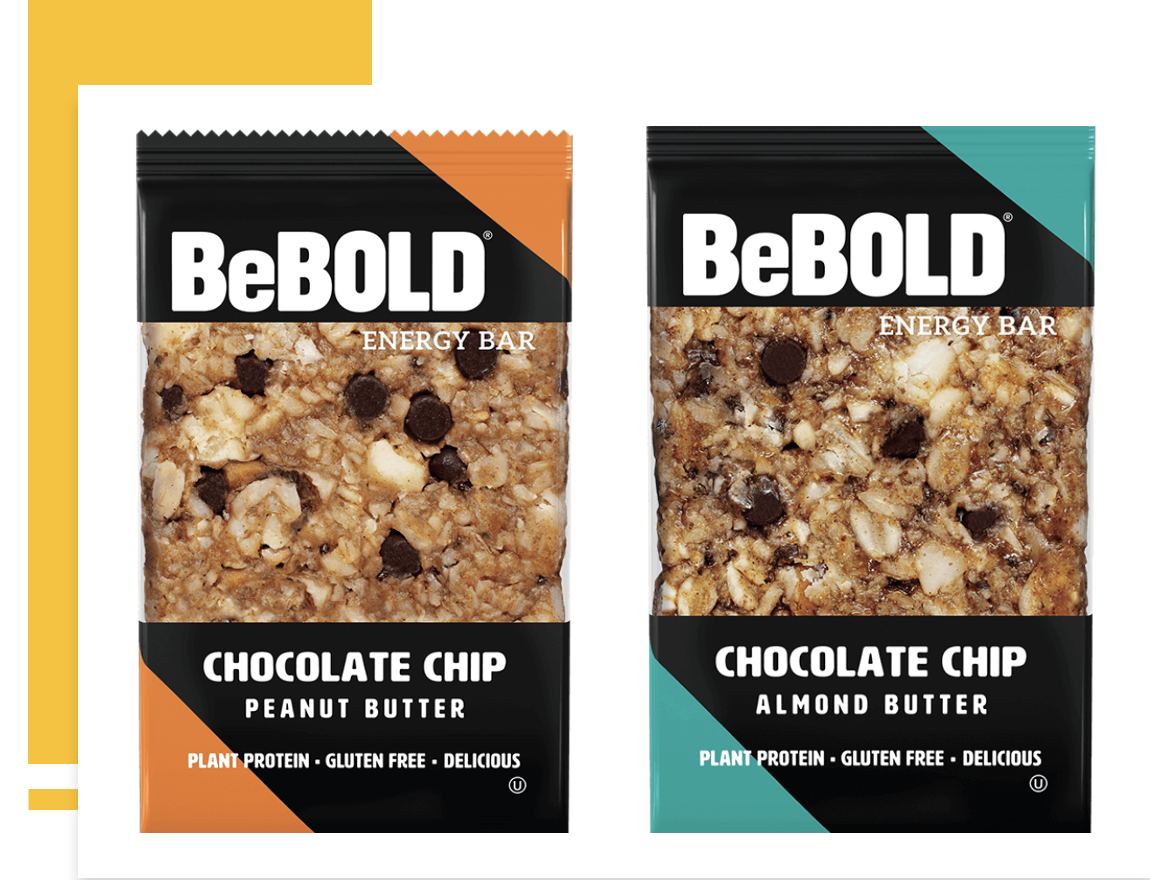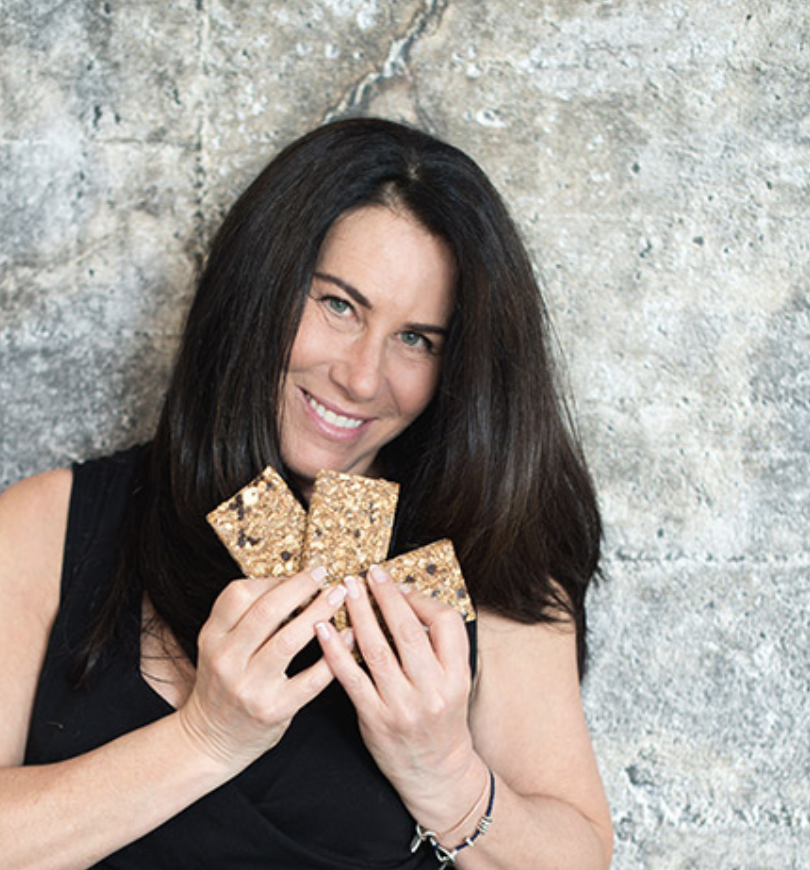Gluten-free Goodies
Chef David
How did gluten become so feared, and why are we only hearing about it recently? The vilification of gluten is relatively recent, partially due to its link to Celiac disease, a digestive abnormality affecting approximately 1% of the population, and partly due to healthier lifestyles. Gluten is a protein, found in grains including wheat, barley, and rye, the binding agent that allows doughs to stretch without breaking. For most, gluten is just another protein, part of our diets, the quintessential element for pizza crust. While people with gluten intolerance are challenged to find tasty gluten-free kosher snack options.
We discovered Mightlylicious certified by the Kuf K, and BeBold certified by the OU – if you did not know that they were gluten-free you’d never guess, they are just that good.
Our Gluten-Free Obsession
Gluten has been around for a long time, in fact, wheat and barley, two of the seven species from Israel contain gluten. But they contained lower amounts of gluten than today’s wheat and because they required heavy milling, and grinding, and were eaten less frequently.
In the 19th Century consumption patterns in the United States changed as the Industrial Revolution gave us the ability to easily, produce large qualities of flour. Next came the Great Depression and World War II which encouraged a dietary change from rationed foods like meat and dairy to more inexpensive and accessible alternatives like pasta and bread. This led to an increase in gluten-related ailments. In Europe, the consumption of bread declined due to the war, and there was a decrease in stomach problems in children which led to the discovery of a connection between gluten and stomach issues, including celiac disease.
In the 1970s scientists classified celiac disease as an autoimmune disorder. They found that for people with celiac disease, eating gluten can cause the immune system to attack its own intestines, preventing the absorption of nutrients. Then in the 1980s, non-celiac gluten sensitivity emerged, as people without celiac disease experienced similar symptoms but without damaging the intestines.
Gluten-free became popularized in the 2010s when celebrities opted for gluten-free diets as a weight loss solution. This went hand-in-hand with a move away from processed foods, and toward healthier options.
Mightylicious
Mightylicious created gluten-free cookies that are decadent and delicious. Founded in 2012 by Carolyn Haeler. After being diagnosed with celiac disease, Haeler dissatisfied with the available gluten-free options, took it upon herself to create a delicious cookie without sacrificing taste, flavor, or texture.
We think she succeeded, producing seven varieties of cookies: brown butter chocolate chip, brown butter shortbread, oatmeal raisin, Double Dutch chocolate chip, oatmeal coconut, salted peanut butter, and vegan chocolate chip. These handcrafted cookies were designed to be indulgent and satisfying, in taste and texture.
We sampled three flavors, Salted Peanut Butter is just gluten-free, while Double Dutch is also flourless, and dairy-free, and Grandma Arline’s oatmeal coconut is also vegan. They were all good, soft, and delicious. The Peanut Butter cookies contain only eight ingredients, peanut butter, cage-free eggs, brown sugar, maple syrup, vanilla, salt, grape juice, and rice syrup. Our favorite was the Peanut Butter but we enjoyed the richness of the Double Dutch Chocolate
Each bag contains ten cookie packs of soft, vibrant cookies, packing bold favors. They are not exactly low in calories, with 90 calories per cookie, but they are rich and tasty.
We were especially happy with their freshness, and individualized two-cookie parkettes, which makes it easy to pack for traveling.
Mightylicious cookies are sold online and in select stores.
BeBold Bars
BeBold is a gluten-free refrigerated snack bar from the founder of Stacy’s Pita Chip Company, Stacy Madison, who partnered with her dad, a lifelong entrepreneur psychologist turned “snack-fooder” on this delicious energy bar. “Like the pita chips, we created the bars to have a balance of flavor, taste, and health, but the taste is first,” says Madison.
These bars are different, blended with nut butter, deliciously chewy, moist, and don’t crumble. They are dairy and gluten-free. Each bar contains 6 grams of protein and 260 calories per bar. They come in Chocolate Chip Peanut Butter, Chocolate Chip Almond Butter, and Macadamia Nut Almond Butter (we did not try). The ingredients are recognizable – rolled oats, wildflower honey, peanut or almond butter, walnuts, brazil nuts, chocolate chips, maple syrup, canola oil, cane sugar, chia seeds, sea salt, and cinnamon.
Their BeBold energy bar is different, with a dense texture that comes from rolled oats and chia seeds, and sweetness from wildflower honey and maple syrup. They take their bar in an interesting direction, recommending adding them to smoothies, or yogurt, or crumbling them onto sliced apples and baking. The website has nearly two dozen recipes.
BeBold bars can be purchased online and in select stores (refrigerator cases).
Stacy’s Success Story
In 2006, Madison sold her pita chip company to PepsiCo, she took that same passion for healthy food and started Stacy’s Juicebar in Needham, Massachusetts selling juices, smoothies, acai bowls, salads, sandwiches, and energy bars. The juice bar closed during the pandemic, and Stacy pivoted to launch BeBOLD Energy Bar, because as she said “change requires being bold,” BOLD is an acronym for Being yourself, Outside your comfort zone, Little by little, Do it again!
Sounds a little odd, you bet… “Only one who attempts the absurd can achieve the impossible”.
Eating gluten-free cookies can be gratifying, offering rich flavor and texture. BeBold bars and Mightylicious cookies raise the bar by providing kosher consumers with delicious gluten-free choices.
Life’s complicated, selecting gluten-free cookies should be simple and delicious.


